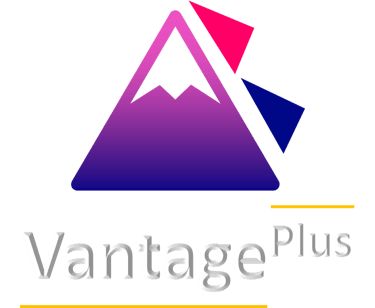
Top 8 SEO Strategies for 2024: Boost Your Traffic by 50%
Discover top SEO strategies for 2024 to boost your traffic by 50%. Learn how integrating social media enhances SEO through engaging content, strategic optimization, and innovative digital marketing approaches. Book a meeting with us to elevate your online presence.
SEO
Bashaar Ahmed
2/7/202414 min lesen
Strategically Enhancing Your Digital Footprint: The Top 10 SEO Techniques for 2024
In the rapidly evolving world of digital marketing, mastering SEO has become more crucial than ever before. As we step into 2024, staying ahead of the curve with the latest SEO strategies is not just beneficial; it's imperative for any business aiming to boost its online traffic by a significant margin. With the digital landscape becoming increasingly competitive, leveraging advanced SEO techniques can be the key to unlocking a 50% increase in your website's traffic. This guide unveils the top 10 SEO strategies for 2024, meticulously crafted to enhance your digital presence, optimize your content for search engines, and ensure that your brand stands out in the crowded digital marketplace. Whether you're refining your keyword research, optimizing for mobile and voice search, or enhancing user experience, these insights are designed to drive substantial improvements in your site's visibility and engagement.


1. Keyword Research: The Foundation of SEO
As the bedrock of all successful SEO strategies, keyword research is a pivotal and painstaking process that can't be overlooked. It is more than just searching for high-volume search terms, it involves understanding the underlying intent that drives a user's search. Instead of merely focusing on word counts or density, marketers need to delve deeper; understanding the context and relevancy of these keywords.
Becoming adept in keyword research equips marketers with the ability to anticipate market shifts, respond to changes in industry trends, and provides direction to burgeoning SEO strategies. It enables the framing of relevant content that caters not only to the search engines but also aligns accurately to the user's query, ensuring meaningful engagement and higher ranking. This crux in the SEO blueprint can potentially elevate the visibility and credibility of a website leading to significant traffic growth.
Tools and Techniques for Effective Keyword Analysis
Accelerating SEO Optimization calls for leveraging a myriad of keyword research tools available today. These tools provide crucial insights, extend beyond the basic keyword suggestions and allow SEO professionals to discover new opportunities, understand user intent, and shape their strategies effectively. A few of these indispensable tools, such as Google Keyword Planner, SEMrush, and Ahrefs, have stolen the limelight for their advanced analytical capabilities. They unravel essential elements, including search volume, keyword difficulty, relevant long-tail keywords, and even the competitive landscape, thus proving invaluable for framing an SEO strategy.
Another layer of sophistication is added to keyword analysis with techniques geared towards SEO Optimization. One such technique is the use of Latent Semantic Indexing (LSI) keywords. These are contextually related keywords that Google considers when ranking content for a specific keyword. Additionally, understanding the user intent, whether informational, navigational, transactional, or commercial, is a key factor in crafting successful content. Furthermore, competitor keyword analysis offers ideas for new keywords and points out gaps that could be filled in your current strategy, thus reinforcing the foundation of SEO optimization.
2. Mobile Optimization: Essential for Modern SEO
For businesses with an online presence, the importance of mobile optimization cannot be overstated. The increasing use of smartphones for web access has revolutionized the way SEO is performed, a change that Google recognized with its introduction of mobile-first indexing. When websites are not optimized for mobile use, users often experience issues such as slow loading times or poor display, potentially leading to a decrease in traffic and lower visibility on search engine results pages.
Local SEO is becoming a significant focus within this mobile-driven landscape. This is because mobile users often perform searches to find local businesses or services. Therefore, for a company to remain competitive within their market, a mobile-optimized website is no longer a luxury, but rather a necessity. Optimized sites offer a seamless user experience, which Google rewards with a higher ranking. Thus, mobile optimization is an integral part of any well-rounded SEO strategy, interacting with other elements such as keywords, content quality, and link building, to deliver a comprehensive and effective SEO plan.


Implementing Mobile-First Design and Usability
In today's competitive digital landscape, implementing mobile-first design and usability has emerged as a strategic priority. With smartphones being the primary device for accessing the internet, businesses adapting to a mobile-first approach are setting the benchmark for online user experiences. This shift has not only transformed the way websites are designed but also has significant implications for Technical SEO strategies. Mobile optimization involves creating a seamless and engaging mobile user experience, ensuring faster loading times, user-friendly interfaces, and responsive design layouts.
The role of Technical SEO in a mobile-first approach cannot be emphasized enough. From speeding up the website's load time to improving its crawlability, Technical SEO contributes significantly to enhancing mobile usability. As Google has shifted towards mobile-first indexing, having a technically sound, mobile-optimized website is no longer an added advantage but an absolute necessity. This can be achieved by using responsive web design standards, prioritizing content for mobile users, and ensuring that all elements on the page, from text to images and videos, are optimized for mobile devices. This insistence on mobile-first design, underpinned by solid Technical SEO, paves the way for better user engagement and higher rankings in search results, ultimately leading to improved business performance.
3. Voice Search Optimization: Adapting to New User Behaviors
Advancements in technology and the growth of voice-activated devices nominate voice search optimization as a crucial aspect in the realm of SEO. This delves into the innovative territory of caterings to users who prefer online searches through spoken queries rather than traditional typed text inputs. With the increasingly high sales of smart speakers like Amazon's Echo or Google Home devices, businesses need to adjust their optimization strategies to respond effectively to this user behavior change.
Adapting to this new paradigm implies that SEO guidelines should be recalibrated in context of more natural, conversation-like syntax that voice searches typically use. Consider the search queries; they are usually longer, more specific, and posed in a question format. Hence, the need to refine your SEO strategy to focus on longer keywords and even whole sentences becomes imperative. Also, it's vital to consider the user's intent, as most voice searches are carried out with an intention to perform local searches or accessing specific information instantly. This signals an exclusive trend in SEO strategy where voice search optimization is considered integrally while planning and implementing SEO campaigns.
Strategies for Optimizing Content for Voice Queries
Adapting content for voice queries necessitates a deep understanding of the underlying technology and user behavior. With the surge in smart speaker usage and voice-based digital assistants, it's critical to incorporate a conversational tone into your content. Long-tail keywords, which typically fit into natural spoken language, have become a lifeline for voice search optimization.
Moreover, it is pivotal to focus on local SEO strategies, as many voice searches are locally oriented. For instance, including phrases such as “near me” or specific geographic locations can bolster a website's visibility for voice queries. Also, structured data implementation can help search engines understand your content better, increasing the likelihood of being picked up in voice searches. The goal should be to craft content that answers users’ queries succinctly and effectively, aligning with the quick and conversational nature of voice search.
4. Content Quality: The Core of SEO Success
The digital marketing landscape, in particular SEO, relies heavily on meticulous content creation. Spearheading most successful campaigns, high-quality content goes a long way in improving online visibility and driving organic traffic. Integral to this process is understanding and implementing strategies that highlight the relevance and reliability of your content to both the audience and search engines. Essentially, strong content effectively optimizes keyword usage while satisfying user requirements and purpose.
One cannot ignore the significance of E-A-T (Expertise, Authoritativeness, Trustworthiness) guidelines in shaping content that resonates across the space. It forms the basis for achieving high-quality content. Striking a balance between user intent and these guidelines primes a platform for future SEO success. Improving the user’s experience by tailoring content to their needs and providing trusted, industry-centric information facilitates a robust online presence, hence fortifying the SEO fortitude of any given website.
Crafting Content That Meets User Intent and E-A-T Guidelines
Producing high-quality content that caters to both user intent and E-A-T (Expertise, Authoritativeness, Trustworthiness) guidelines is critical for SEO success. When crafting your articles, blog posts, or content pages, understanding the user intent behind certain search queries helps shape your content to meet the users' needs effectively. Be it informative, transactional, or navigational intent, striving to match this user's search context can significantly enhance your SEO performance.
Parallelly, adherence to Google's E-A-T guidelines is also instrumental in ensuring your SEO strategy's effectiveness. This component emphasizes the need for demonstrating your expertise and authority in your field and building trust with your audience. This is achieved through the consistent delivery of comprehensive, factually accurate, and well-researched content. It's about making certain that the information presented is up-to-date, relevant, and is provided by a credible source or expert in the topic area. With such content, your website can stand out as a trusted source of information, thereby improving its organic search rankings.
5. Technical SEO: Building a Strong Website Architecture
Mastering the technical aspects of SEO often involves developing a robust website architecture that ensures seamless navigation and efficient indexing by search engine bots. A good architecture provides a cohesive structure, facilitating accessibility and enhancing the interpretation of the website's content by search engines. This includes creating a logical hierarchy of information with clean URL structures, leveraging XML sitemaps to aid crawlers in discovering and indexing pages, and utilizing breadcrumb menus to provide users with a clear pathway through the site.
Speed, security, and structured data optimization form integral components of technical SEO. Page speed is more than a user convenience factor - it is a recognized ranking signal, as sluggish websites often increase bounce rates and reduce user dwell time. Similarly, security is critical in achieving user trust, and websites with HTTPS encryption are favored by search engines. Structured data, also known as schema markup, assists search engines in understanding the context of the site’s content, which may enhance the website’s presence in search results with rich snippets and increased visibility.
Speed, Security, and Structured Data Optimization
Website speed is of utmost importance in the realm of technical SEO. It directly affects the usability of the site, impacting user experience and, consequently, conversion rates. Search engines recognize this value, prioritizing faster sites in the SERPs (Search Engine Results Pages). As page load time increases, the bounce rate follows suit, driving potential customers away. Website developers and owners must therefore strive to optimize speed, making it a critical component in the technical SEO landscape.
Security plays a pivotal role in building trust with users and search engines alike. Encrypting data transmitted through the site by implementing HTTPS (HyperText Transfer Protocol Secure) can assist in preventing data breaches, contributing to a safer web experience. Alongside speed and security, structured data optimization can significantly enhance SEO efforts. By implementing structured data, search engines can better understand the content of your site, potentially leading to richer search results and improved click-through rates (CTR). Hence, the triad of speed, security, and structured data optimization forms an indispensable part of technical SEO, aiming to create a robust and user-friendly digital platform.
6. Link Building: Securing Quality Backlinks
In the vast universe of SEO, link building remains a crucial component, playing a significant role in improving search engine ranking and enhancing website visibility. Quality backlinks are akin to endorsements or votes of confidence from other websites, indicating the relevance and credibility of your content. Acquiring these links from authoritative and reputable websites is a highly effective way of impressing search engine algorithms and significantly securing higher rankings.
Utilizing strategic techniques is imperative for gaining trustworthy links. This entails methods such as guest blogging, creating compelling infographics, leveraging social media platforms, and engaging in efficient email outreach. Guest blogging allows you to share your expertise on other platforms, thereby gaining exposure and quality backlinks. Sharing engaging content or infographics widely on social platforms can lead to natural linking and improve the authority of your website. Fostering relationships through personalized email outreach can also pave the way for partnership opportunities and quality backlink acquisition.
Effective Techniques for Gaining Trustworthy Links
In the realm of SEO, the strategy of link building centers on acquiring high-quality links from other reputable sites. Acquiring these trustworthy links can amplify your site's authority, boost its organic search ranking, and bring in high-quality referral traffic. It has evolved from simply generating a large quantity of links to focusing on the quality and relevance of these links. One of the most effective techniques for this includes guest posting on high-authority, relevant blogs and contributing valuable information to your industry's online community.
Another technique to consider is the creation and distribution of valuable, unique, and engaging content such as infographics, research studies, or case studies. This type of content often attracts organic links from other bloggers or websites who find your content valuable and want to share it with their audience. Moreover, using social media platforms to promote this content can increase visibility, encouraging more natural link building. Long gone are the days where black-hat SEO tactics worked, nowadays, it's all about offering genuine value and building solid relationships in the digital space.
7. Local SEO: Boosting Visibility in Local Search
Local SEO has emerged as a strategic approach to digitally marketing a business online. It focuses on enhancing visibility by optimizing a website to appear in local search results. This strategy is crucial for businesses that have a physical location or serve a specific geographical area. By effectively utilizing local SEO, businesses can promote their products and services to customers when they search online for local businesses.
Google My Business (GMB) is an indispensable tool for implementing local SEO. By optimizing the GMB profile with updated, accurate information, including business hours, address, phone number, businesses can significantly increase their chances of showing up in local search results. Additionally, incorporating customer reviews and photos can enrich the GMB profile, driving engagement and providing prospective customers with valuable insights about your business. Furthermore, focusing on obtaining backlinks from locally relevant sites can bolster your website's authority and help boost local search rankings.
Local SEO is a targeted digital marketing strategy that emphasizes enhancing online visibility for businesses with physical locations or those serving specific geographic areas.
This approach can be particularly effective in promoting products and services to customers who are conducting online searches for local businesses.
Google My Business (GMB) plays a pivotal role in the successful implementation of local SEO. Here's how:
By ensuring your GMB profile is updated with accurate information such as business hours, address, and contact details, you increase your chances of appearing in local search results.
Incorporating customer reviews and photos into your GMB profile not only enriches it but also drives engagement by providing potential customers with valuable insights about your business.
Focusing on obtaining backlinks from locally relevant websites can enhance your website's authority, further boosting its rankings in local search results.
In summary:
Local SEO helps businesses boost their visibility among potential customers searching for services or products within a specific geographical area.
Google My Business is an essential tool for implementing this strategy effectively. It allows businesses to provide up-to-date information about their operations, engage prospective clients through reviews and photos, and build website authority via locally relevant backlinks.
Optimizing for Local Pack and Google My Business
Having an optimized presence on Google My Business (GMB) is an essential part of any local SEO strategy. GMB listings appear in the "Local Pack," the boxed area that appears in organic search results when Google determines the query has local intent. Therefore, having a well-maintained GMB profile can significantly increase your business's online visibility and consequently increase traffic to your webpage, brick-and-mortar store, or both.
Optimizing for Local Pack involves ensuring that your business's information is accurate and comprehensive. Details such as name, address, and phone number (NAP data) must be consistent across all online platforms. This not only aids in improving your rankings in the Local Pack but also provides potential customers with vital information. Reviews are also a crucial component in Local Pack Optimization. Businesses with strong ratings and positive reviews have a better chance of standing out and attracting clicks. Meanwhile, an optimized GMB profile involves using a high-resolution profile picture, posting regular updates, and promptly responding to reviews, building a connection with your customers and enhancing your online reputation. Hence, the dual approach of optimizing for Local Pack and GMB, effectively executed, can secure your stronghold in the local market and improve your business's digital reach.


8. Social Media Integration: Enhancing SEO Through Social Signals
In today's digital era, the influence of social media on search engine optimization (SEO) cannot be understated. Social signals - likes, shares, comments, and re-tweets - contribute significantly to a website's visibility and traffic. Thriving in today's competitive marketplace requires businesses not just to create top-notch content but also to develop strategies that expand their reach and engagement on social media.
While previously considered separate entities, SEO and social media now work hand in hand to enhance online visibility. An optimized social media approach can magnify the impact of your SEO efforts. Ensuring your brand's active social presence not only expands reach to potential customers but also boosts your website's SEO ranking. Meanwhile, high-quality backlinks from social media platforms can be a genuine testament to the value of your content, signaling search engines to rank your page higher.
Content Strategies for Social Media Impact on SEO
In the dynamic interplay between SEO and social media, the key to amplifying your online presence lies in strategic content creation and engagement. Start by crafting shareable content that resonates with your audience—think informative how-to guides, compelling infographics, and videos that capture attention. Optimize your social media profiles and posts with relevant keywords to enhance discoverability. Encouraging user engagement through comments, likes, and shares not only builds a community around your brand but also signals to search engines the relevance of your content. Additionally, leveraging video content across platforms like YouTube, Instagram, and Facebook can significantly boost visibility, as these formats are favored in both social media feeds and search engine results.
Cross-promotion and social listening form the backbone of a robust social media strategy that supports SEO efforts. By tailoring content to each platform while maintaining a unified brand message, you extend your reach and drive more traffic to your site. Collaborations with influencers can further increase reach and engagement, leading to quality backlinks and higher SEO rankings. Implementing these strategies ensures your social media efforts complement your SEO goals, driving enhanced visibility and engagement in a crowded digital marketplace.


Frequently Asked Questions!
What is the significance of keyword research in SEO?
Keyword research is the foundational step in SEO. It involves identifying and analyzing the terms that people enter into search engines, with the ultimate goal of optimizing content around these terms.
How does mobile optimization affect SEO?
Mobile optimization ensures that mobile users have an experience optimized for their device and this significantly affects SEO. Google prioritizes mobile-friendly websites in search results, making mobile optimization a crucial aspect.
What is voice search optimization and why is it important?
Voice search optimization involves making your website more accessible to voice searches. As the use of voice-activated technologies continues to grow, optimizing for voice search is becoming increasingly important in maintaining and improving SEO ranking.
How does content quality affect SEO success?
Content quality is at the heart of SEO success. Google prioritizes high-quality, relevant content in search rankings. Crafting content that meets user intent and adheres to E-
What is technical SEO and why is it important?
Technical SEO involves optimizing your website so that search engines can crawl and index it effectively. Factors like speed, security, and structured data optimization are key in building a strong website architecture, which can significantly enhance SEO performance.
What is link building and how does it impact SEO?
Link building involves acquiring hyperlinks from other websites to your own. Quality backlinks act as endorsements, signaling to search engines that your content is valuable and trustworthy, which can improve your SEO rankings.
How can local SEO boost visibility in local search?
Local SEO involves optimizing your website to increase visibility in localized search results. Optimizing for Local Pack and Google My Business can help businesses appear in relevant local searches, driving more traffic and potential customers.
How can social media integration enhance SEO through social signals?
Social media integration can have a positive impact on your SEO by sending social signals to search engines, which act as indicators of your content's relevancy and quality. By integrating social media into your SEO strategy, you can promote content sharing and increase your online visibility.
Conclusion
Navigating the SEO landscape in 2024 demands a strategic blend of traditional optimization techniques and innovative digital marketing approaches. As we've explored, integrating social media into your SEO strategy is not just beneficial; it's essential for boosting your website's visibility, engagement, and traffic. By adopting the content strategies outlined, businesses can leverage social signals to significantly enhance their SEO performance. Remember, in the ever-evolving digital world, staying ahead means continuously adapting and optimizing your strategies to meet the changing dynamics of search engines and social platforms.
Ready to elevate your SEO game and harness the full potential of social media? Don't navigate the complexities of digital marketing alone. Book a meeting with us today, and let's craft a tailored SEO strategy that not only boosts your online presence but also drives tangible business results. Whether you're looking to refine your content strategy, optimize for the latest SEO trends, or integrate social media into your marketing mix, our team is here to guide you every step of the way. Click to schedule your consultation and take the first step towards transforming your digital marketing strategy in 2024.
Vantage Plus
Öffnungszeiten
Montag - Freitag 10:00 - 18:00pm
Standort
Business Center 1, M Floor. The Meydan Hotel, Nad Al Sheba, Dubai U.A.E
Kontakte
Telefon: +971566121732 info@vantageplusmarketing.com
